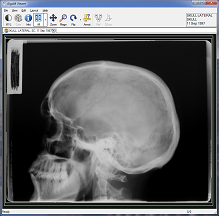
Most equipment manufacturers offer the option of archiving imaging data on compact discs (CDs) which can be transported, stored, and reviewed easily. The simplest and most intuitive application of DICOM browsers is to view images on stand-alone systems that are not a part of a radiology network. This article describes the applications of a few DICOM browsers in clinical radiology and imaging research and evaluates their merits and demerits in common radiology applications (Appendix 1).ĭICOM browsers for basic viewing of DICOM images Several freely downloadable DICOM browsers, which can be easily integrated into a radiologist's practice, are available via the Internet. Though these softwares are available from several vendors, they are expensive and beyond the reach of the average radiologist. To view DICOM images on PCs, dedicated DICOM browsers are needed. With the fall in prices of hardware and peripheral devices, computers with high-end hardware specifications are available at affordable prices. Viewing these images outside the radiology network still requires printing of the images on hardcopy films. The adoption of DICOM standards by medical imaging equipment vendors has helped in effective cross-machine communications and made possible integration of imaging equipment from different manufacturers.Īlthough DICOM is the accepted standard for the storage and networking of medical images, the image is encoded in a format that cannot readily be viewed on an average personal computer (PC). Thus it is possible to identify the origin of the image, the patient, data acquisition parameters of the study and so on, even if a single image is analyzed in isolation.

The basic difference between a DICOM image and an image in other formats like JPEG, TIFF, or GIF is that the DICOM image contains a ‘header’ with information (such as patient demographics, machine, scan parameters, and a host of other non-image data) in addition to the image data. Image files that conform to the DICOM standards are commonly referred to as DICOM-format images. This has become the principal standard for the communication of medical images and is now implemented by virtually all medical imaging equipment manufacturers.

The digital imaging and communications in medicine (DICOM) standard was created by the National Electrical Manufacturers' Association (NEMA) in order to improve compatibility and workflow efficiency between imaging systems, medical devices, and other information systems used in a hospital environment.


 0 kommentar(er)
0 kommentar(er)
